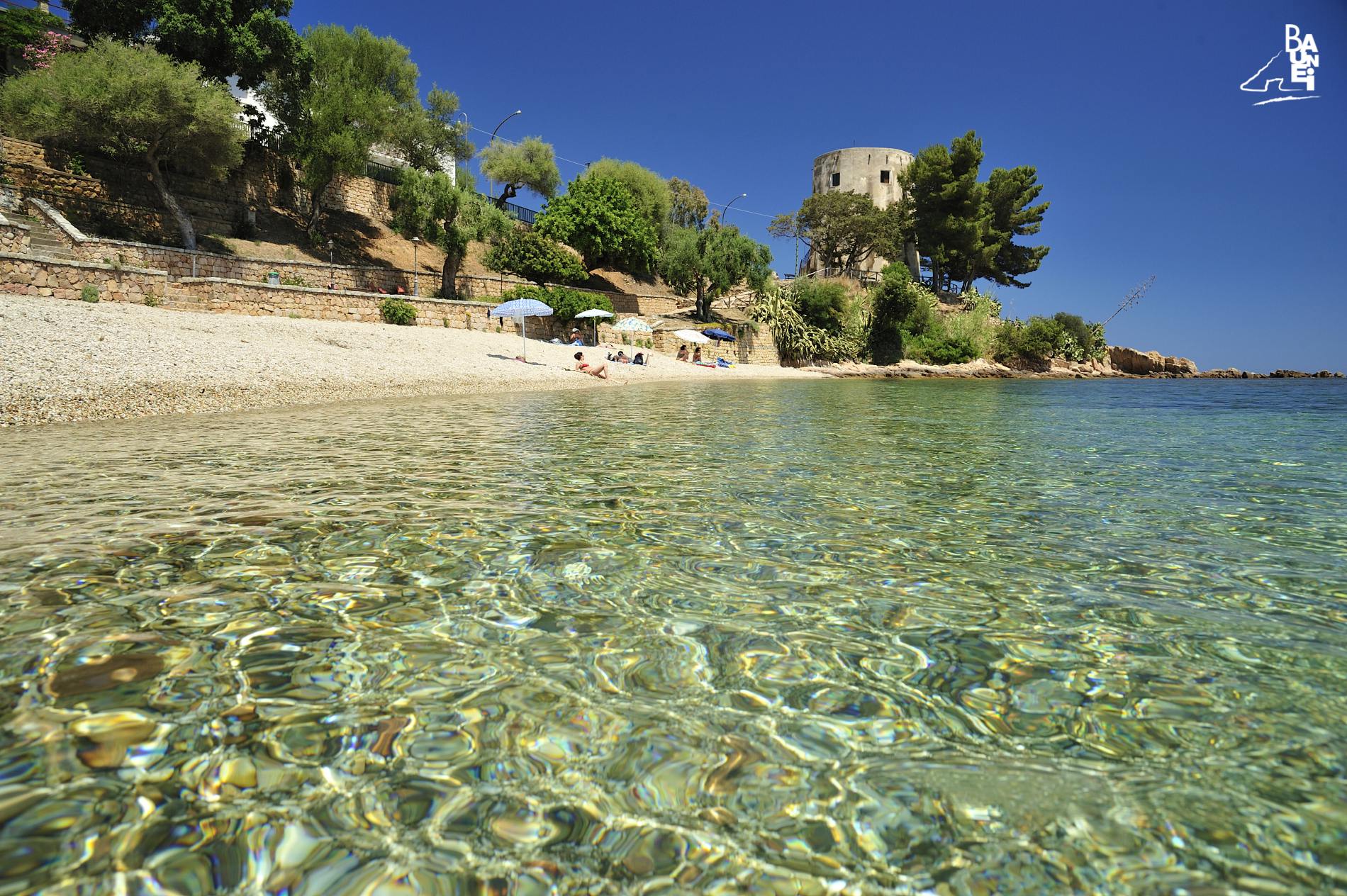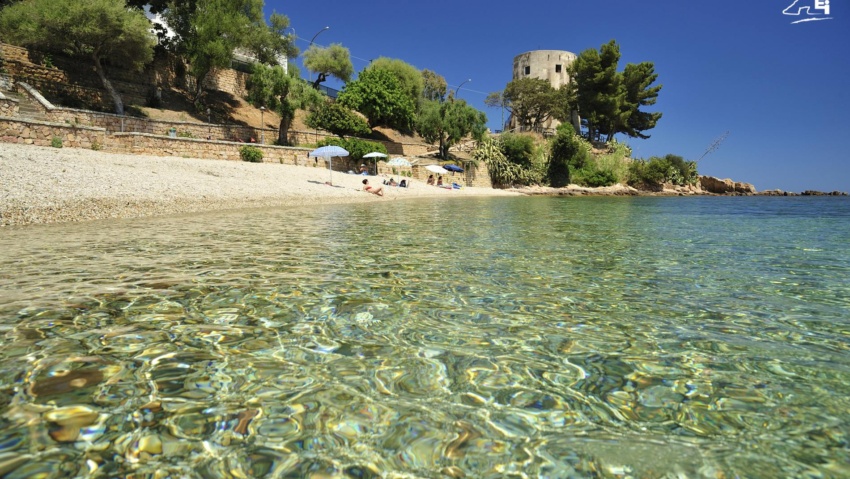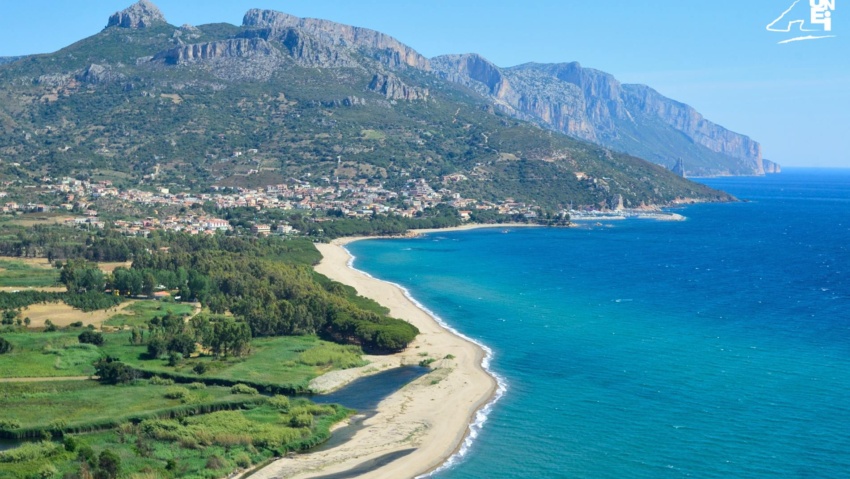The “Central” Beach
The “Central Beach” in Santa Maria Navarrese stretches from the rocks under the “Spanish Tower” to the rocks known as “di Birissi”, named after the wealthy landowner (“Cavalier Berizzi”) who up until the mid-twentieth century was one of the most important landowners in the area. Since 1849 or 1850, these red porphyry rocks (called “the tip of the Red stone” by Angius) mark the municipal boundary between Baunei and Lotzorai along the coast. The name “Central” beach refers to the position of the beach with respect to “San Giovanni beach” (which stretches from the rocks to the north of the Spanish Tower to the breakwater pier of the marina) and the beach of “Tancau” (in the municipality of Lotzorai).
In the past, the coarse, sandy beach, about 400 metres in length, was called “s’ispiaggia de s’erriu mortu” (“the dry river beach”) because every once in a small a small torrential stream flows out of it. Two groups of rocks characterise the waters in front of “Central” beach: one, consisting of angular rocks, is simply called “Pedras” ( “the stones”), while the other, featuring more rounded shapes, is called “Montes Tundus” (“round mountains”). Behind the beach, near the mouth of “s’erriu mortu”, a shady pine forest provides solace during the hottest hours of the day, while on the other side, not far from the Spanish Tower, a centuries-old carob tree, a few metres from the shore, stands in a corner dominated by olive trees. Angius narrated that in the first half of the nineteenth century, many merchant vessels were moored on Santa Maria’s beach: “Frequented by Genoese, Neapolitans, Sicilians and Romans – wrote Angius – to load cheese, skins, lard, grain and wine, which is the main item of trade in this province. Continuing along this beach, above a green cliff is a small church dedicated to Our Lady, about 60 steps from the aforementioned tower. A warehouse with a portico for stocking commodities which are to be boarded has been built there”. Angius also reminds us that the beach was considered a great place to dock by Saracen pirates, too (despite the armed tower); indeed, the abbot wrote that “in that small port of Santa Maria Navarrese, and in other coves in the area, in earlier times [in 1815] there were frequent landings of barbarians and a lot of serious damage was caused”.





